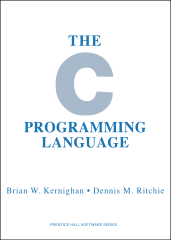C programmer
COURTESY :- vrindawan.in
Wikipedia
C (pronounced like the letter c) is a general-purpose computer programming language. It was created in the 1970s by Dennis Ritchie, and remains very widely used and influential. By design, C’s features cleanly reflect the capabilities of the targeted CPUs. It has found lasting use in operating systems, device drivers, protocol stacks, though decreasingly for application software. C is commonly used on computer architectures that range from the largest supercomputers to the smallest micro controllers and embedded systems.

A successor to the programming language B, C was originally developed at Bell Labs by Ritchie between 1972 and 1973 to construct utilities running on Unix. It was applied to re-implementing the kernel of the Unix operating system. During the 1980s, C gradually gained popularity. It has become one of the most widely used programming languages, with C compilers available for almostall modern computer architectures and operating systems. C has been standardized by ANSI since 1989 (ANSI C) and by the International Organization for Standardization (ISO).
C is an imperative procedural language supporting structured programming, lexical variable scope, and recursion, with a static type system. It was designed to be compiled to provide low-level access to memory and language constructs that map efficiently to machine instructions, all with minimal runtime support. Despite its low-level capabilities, the language was designed to encourage cross-platform programming. A standards-compliant C program written with portability in mind can be compiled for a wide variety of computer platforms and operating systems with few changes to its source code.
Since 2000, C has consistently ranked among the top two languages in the TIOBE index, a measure of the popularity of programming languages.
C is an imperative, procedural language in the ALGOL tradition. It has a static type system. In C, all executable code is contained within subroutines (also called “functions”, though not in the sense of functional programming). Function parameters are passed by value, although arrays are passed as pointers, i.e. the address of the first item in the array. Pass-by-reference is simulated in C by explicitly passing pointers to the thing being referenced.
C program source text is free-format, using the semicolon as a statement separator and curly braces for grouping blocks of statements.
Many later languages have borrowed directly or indirectly from C, including C++, C#, Unix’s C shell, D, Go, Java, JavaScript (including transpilers), Julia, Limbo, LPC, Objective-C, Perl, PHP, Python, Ruby, Rust, Swift, Verilog and System Verilog (hardware description languages). These languages have drawn many of their control structures and other basic features from C. Most of them (Python being a dramatic exception) also express highly similar syntax to C, and they tend to combine the recognizable expression and statement syntax of C with underlying type systems, data models, and semantics that can be radically different.
The origin of C is closely tied to the development of the Unix operating system, originally implemented in assembly language on a PDP-7 by Dennis Ritchie and Ken Thompson, incorporating several ideas from colleagues. Eventually, they decided to port the operating system to a PDP-11. The original PDP-11 version of Unix was also developed in assembly language.
Thompson desired a programming language to make utilities for the new platform. At first, he tried to make a Fortran compiler, but soon gave up the idea. Instead, he created a cut-down version of the recently developed BCPL systems programming language. The official description of BCPL was not available at the time, and Thompson modified the syntax to be less wordy, and similar to a simplified ALGOL known as SMALGOL. The result was what Thompson called B. He described B as “BCPL semantics with a lot of SMALGOL syntax”. Like BCPL, B had a bootstrapping compiler to facilitate porting to new machines. However, few utilities were ultimately written in B because it was too slow, and could not take advantage of PDP-11 features such as byte addressability.
